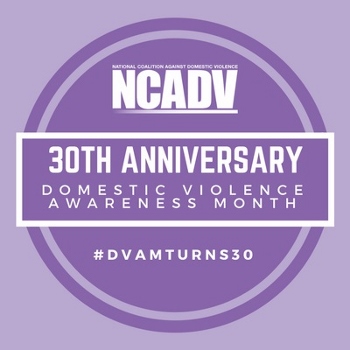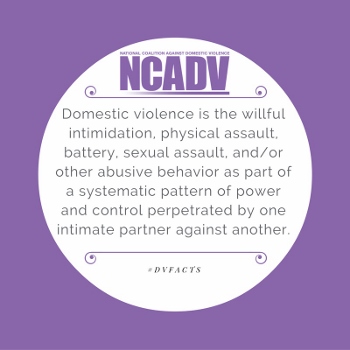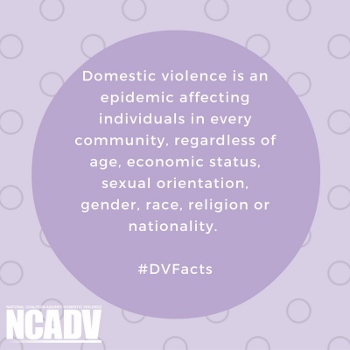 Did you know October is Domestic Violence Awareness Month? While domestic violence can happen any day of the year, we wanted to take some time this month to focus on the important work being done in this field, including by many of our clients.
Did you know October is Domestic Violence Awareness Month? While domestic violence can happen any day of the year, we wanted to take some time this month to focus on the important work being done in this field, including by many of our clients.
As you may have seen us recently highlighting on our Facebook page, over the years we have partnered with a number of organizations that are working to end domestic and sexual violence. These include statewide coalitions in North Dakota and Wisconsin, as well as local organizations like Pearl Crisis Center and Men as Peacemakers. Much of our work with these organizations revolves around “primary prevention”—preventing violence before it starts. A primary prevention strategy consists of multiple activities like media campaigns and school-based programming on healthy teen relationships.
Primary prevention has become more and more a part of these organizations’ work over the past two decades. In the early 2000s, government funders decided to invest in primary prevention strategies instead of awareness-raising activities. We have worked closely with North Dakota’s domestic and sexual violence efforts on its activities through the Rape Prevention and Education program, a program funded by the Centers for Disease Control and Prevention. Over in Wisconsin, the state government gives $1 million a year to the statewide domestic abuse coalition, specifically for prevention of gender violence with a culturally-specific focus on youth. Another client of The Improve Group, Duluth-based Men as Peacemakers, focuses exclusively on prevention work, like with its “Don’t Buy It” campaign.
 Evaluation helps organizations see if programs like these work. To support these organizations, we often help design data collection methods to track the change they hope to see as a result of their program. For End Abuse Wisconsin’s gender violence prevention work, we are building the evaluation capacity of grantees who work with youth in culturally-specific local communities. This is helping improve the state’s overall prevention efforts by identifying areas that are and aren’t working to prevent violence.
Evaluation helps organizations see if programs like these work. To support these organizations, we often help design data collection methods to track the change they hope to see as a result of their program. For End Abuse Wisconsin’s gender violence prevention work, we are building the evaluation capacity of grantees who work with youth in culturally-specific local communities. This is helping improve the state’s overall prevention efforts by identifying areas that are and aren’t working to prevent violence.
In North Dakota, we have done “community readiness assessments,” which determine what prevention programs best fit certain communities. We have also provided training on primary prevention and evaluation, and are building facilitative skills within organizations. This has empowered communities to increase their readiness and capacity to launch prevention efforts.
Because of the subject matter expertise we bring to this work, we think of ourselves as “thought partners” as organizations design prevention programs. Along the way, we take an empowerment evaluation approach, which builds organizational capacity for measuring outcomes.
 In this work, we also like to use Technology of Participation (ToP)®, a facilitation method most of our staff is trained in, that focuses on recognizing and honoring contributions of all stakeholders of a particular group or issue. While many resources exist on “what” to do in primary prevention, ToP® teaches organizations “how” to engage stakeholders in evaluation planning and interpretation, for example to co-create a survey.
In this work, we also like to use Technology of Participation (ToP)®, a facilitation method most of our staff is trained in, that focuses on recognizing and honoring contributions of all stakeholders of a particular group or issue. While many resources exist on “what” to do in primary prevention, ToP® teaches organizations “how” to engage stakeholders in evaluation planning and interpretation, for example to co-create a survey.
We also use our expertise in domestic and sexual violence to tailor evaluation tools to this field. For example, instead of talking about needs assessments generally, we explain how community readiness assessments, like we conducted in North Dakota, help communities determine which violence prevention strategy they are ready for.
By tying what we know about prevention of domestic abuse to our evaluation training, we’re talking in a language that makes sense to organizations. Especially during Domestic Violence Awareness Month, we are proud and grateful to work with these clients so they can increase their impact!
